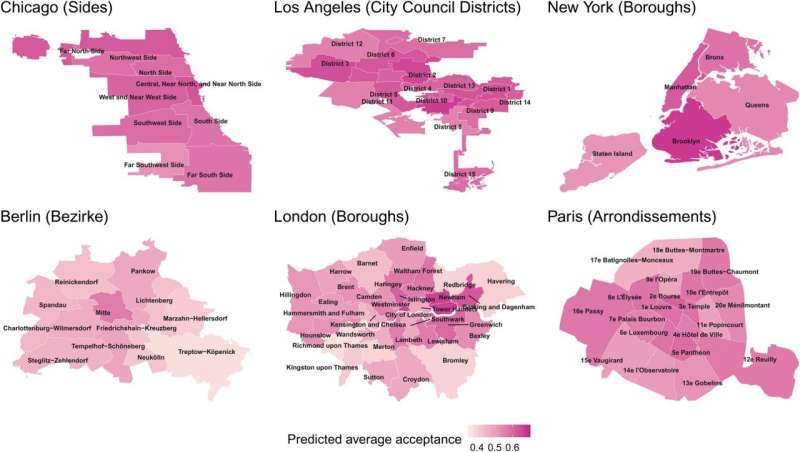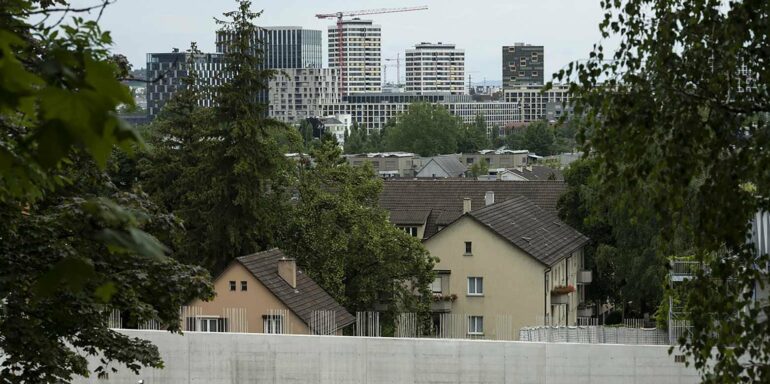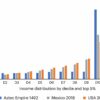Densifying existing settlements while containing urban sprawl—this idea has spread far beyond urban planning circles and is now recognized as a key principle of urban development. Ultimately, dense and compact cities can contribute to several environmental, economic, and social benefits: less urban sprawl, protection of undeveloped land, shorter transport routes, lower greenhouse gas emissions, the creation and cultivation of diverse neighborhoods, and access to more social and cultural amenities.
Nevertheless, urban densification projects regularly encounter local resistance. There are numerous reasons for this, typically including aspects such as traffic, noise, change to the neighborhood character or loss of green space. “In democratic countries, a lack of public acceptance is one of the main factors that can slow down or even block the densification of cities and metropolitan regions,” says David Kaufmann, Professor of Spatial Development and Urban Policy at ETH Zurich.
The closer to the project, the lower the acceptance
Housing is at the center of urban densification. New developments in a city may not only have a direct impact on property values, but also on rental prices and the composition of a neighborhood’s population. “Housing is one of the main reasons why densification is contested today,” Kaufmann says, “and we see that the acceptance of densification both in Zurich and in global metropolises is closely linked to the provision of affordable housing.”
Kaufmann’s research group systematically studied in six global cities and in the canton of Zurich why the public in large cities accepts or rejects housing densification projects. Using a novel combination of survey methods, the group examined the population’s attitude towards densification to determine which project-related factors and urban planning instruments can help explain public acceptance of residential densification projects and how perceived negative effects of densification can be addressed.
The researchers surveyed more than 12,400 participants in Berlin, Paris, London, New York, Chicago, and Los Angeles, which has now been published in the scientific journal Proceedings of the National Academy of Sciences. They found that in all six cities, the spatial proximity of a proposed densification project to the respondent’s home has a decisive influence on their level of acceptance: the closer they live to the future housing project, the lower their acceptance of densification. Are such projects located in another part of the city, then acceptance increases.
The ETH researchers classify this as “NIMBY” behavior, which stands for “not in my backyard.” This discrepancy also exists in the canton of Zurich, as the researchers found in a study, they published earlier this year in the journal Landscape and Urban Planning. Based on a study with a random sample of around 3,000 respondents conducted by the Canton of Zurich and the research company Anovum in 2013, the following picture emerged: while 57.5% of respondents support densification as an overall planning strategy, only 11.9% accept a concrete densification project in their own neighborhoods. At the same time, the survey results show that also most of the respondents, who reject a specific densification project in their neighborhood, nevertheless support densification as an overarching goal of urban development.

In the European cities of Berlin, London and Paris, overall acceptance of residential densification is lower than in the US cities of New York, Chicago and Los Angeles. In Europe, accompanying planning instruments such as affordable housing play a greater role. © PNAS / Spatial Development and Urban Policy SPUR, ETH Zurich
In cities, it’s about housing affordability
For the canton of Zurich, the ETH Zurich research group has shown that the acceptance of housing densification projects varies depending on the type of residential area and the neighborhood: in areas on the city outskirts and in neighborhoods comprising single-family homes, acceptance of residential densification is generally lower than it is in urban neighborhoods, as residents might fear negative effects on residential property values, privacy, and green spaces. In urban neighborhoods, meanwhile, acceptance of densification is generally higher. Here, people’s attitude depends more on the level of housing costs and rent. As urban densification often replaces older housing stock that tend to offer low-cost housing, local residents seem to fear that densification whether it will increase future rental costs.
The researchers have now built on their Zurich results by conducting their international city comparison of Berlin, Paris, London, New York, Chicago and Los Angeles. In this study, they focused on the urban population and more specifically on the role of project-related factors and planning instruments in explaining public opposition toward densification projects.
Their findings highlight the key role of project characteristics in driving public acceptance of densification in the six metropolises: “Acceptance increases when a project includes mixed residential and commercial use and is carbon neutral,” Kaufmann explains, “and conversely, projects of for-profit investors face more resistance.” In addition, Kaufmann’s team systematically studied the impact of three planning tools used in residential densification projects:
Inclusionary zoning, (requiring a minimum share of newly constructed affordable housing units),rent control (regulating rent increases, also called the “rent cap” in Berlin) andparticipatory planning (involving the public in planning processes).
In all six cities, the research showed that a fixed share of affordable housing units for lower income groups, rent control and participation increase acceptance. “Residential densification projects that provide affordable housing in cities are more widely accepted because they help mitigate the perceived negative impacts of that densification,” Kaufmann says.
It is particularly interesting to note that both rent control, which could well be motivated out of self-serving reasons, and a fixed share of housing for low-income households have the effect of increasing acceptance. This point towards the conclusion that affordable housing is a key concern in cities worldwide and it is important in shaping public opinion about urban densification, regardless of whether someone directly benefits from it or not.
Berlin and London most skeptical about densification
In the more market-oriented than regulation-oriented U.S. cities of New York, Chicago and Los Angeles, densification acceptance is higher than in Paris, London and Berlin. Simultaneously, accompanying planning measures for affordable housing have less of an impact on the acceptance of densification in U.S. cities. Densification finds the least acceptance in Berlin and London, which in the German capital may have something to do with the current prevailing “rent cap” debate. In the U.K.’s capital, the debate is arguably more about which segments of the population actually benefit from international investments in the housing market.
As their next step, Kaufmann’s team will investigate densification acceptance across all of Switzerland in the “Densifying Switzerland” project. Among other things, the researchers will evaluate rental prices and all local land-use planning votes over the past 20 years to discover how economic, social, and political factors influence public acceptance of densification.
More information:
Michael Wicki et al, Planning instruments enhance the acceptance of urban densification, Proceedings of the National Academy of Sciences (2022). DOI: 10.1073/pnas.2201780119
Michael Wicki et al, Accepting and resisting densification: The importance of project-related factors and the contextualizing role of neighbourhoods, Landscape and Urban Planning (2022). DOI: 10.1016/j.landurbplan.2021.104350
Citation:
‘Yes, but not like this!’ Why urban densification often lacks public acceptance (2022, September 14)



